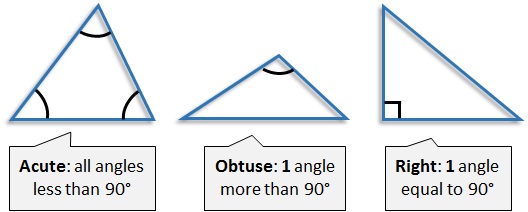In grade 5 math we talked about classifying different triangles. We can classify triangles using angle measures. The names of the triangles are the same as the names of the different angles.

Remember:
- All angles in a triangle add to 180 degrees.
- You can only have one obtuse or one right angle in a triangle.
- All angles must be acute to be classified as acute angled even though obtuse and right-angled triangles have 2 acute angles.
In grade 4 we talked about properties of special quadrilaterals including:
parallel sides
equal sides
right angles
Below is the quadrilateral tree:
Our definition for a parallelogram is opposite sides equal and parallel. What other quadrilaterals can be called parallelograms?
Food for thought....
Is a square a rectangle?
Is a square a rhombus?
Short quiz on angles on Friday. Lessons 1 and 2 in your red duotang.
Social Studies
Just a few people need to write the Social Studies test.
Science
Today we talked about materials that absorb sound. What kind of materials are good at absorbing sound? We had two different ideas shared today. Very hard material with very little spaces and soft, porous materials. Both ideas are sort of right. A material that blocks sound from entering, is soundproof material, which isn't really absorbing the sound. Sound proofing materials are very tightly packed and hard. Sound absorbing are porous, fluffy and soft. They are often used together to block noise.

We might want to soundproof our house to block out the noise. A wall may block some of the sound (outside material) and absorb the rest (inside material) so you hear very little. Places where we would want to absorb sound are loud places that we do not want a sound to echo (reflection of sound) such as an auditorium, restaurant, or even a classroom. What could we put in the classroom that is soft and porous to absorb sound? Think of the library. What is on the floor in the library?
Our next topic is sound reflection.
More food for thought.....
Is it better for the sound to be absorbed near the source or near the place where the sound is being received (the ear).
For example, would we hear the sound of an alarm clock less if we muffle (absorb) some of the sound at the source (alarm clock) or muffle the sound at our ears using ear protection? Try it at home!
No comments:
Post a Comment
Note: only a member of this blog may post a comment.